Comprehensive Analysis of Mint State Coin: Grading, Protection, and Investment Potential
What is a Mint State Coin? Comprehensive Analysis: Grading, Protection, and Investment Potential This detailed survey explores mint state coins, their grading process, the distinction between modern and classic issues, protection methods, authentication, and investment considerations. It aims to provide...

What is a Mint State Coin? Comprehensive Analysis: Grading, Protection, and Investment Potential
This detailed survey explores mint state coins, their grading process, the distinction between modern and classic issues, protection methods, authentication, and investment considerations. It aims to provide a thorough understanding for collectors and investors, emphasizing the role of professional services like Global Coin in acquiring high-grade, investment-quality coins.
A mint state coin is an untouched, uncirculated coin that maintains its original condition and luster, making it highly desirable to collectors and investors. Coins in this pristine, uncirculated condition are often described as brilliant uncirculated, highlighting their exceptional quality. In this article, we’ll explore what distinguishes these pristine coins, how they are graded, and why they hold such significant value. It is important to note that mint state coins are distinct from bullion coins, which are primarily valued for their metal content rather than their collectible or numismatic qualities.
Key Takeaways
-
Mint state coins are uncirculated coins in pristine condition, distinguished by their quality, eye appeal, and historical significance, making them highly valued by collectors.
-
Grading mint state coins relies on the Sheldon Scale, ranging from MS-60 to MS-70, with higher grades indicating better condition and greater desirability. A coin's grade is a key determinant of its value and market appeal.
-
Key factors influencing mint state coin grades include eye appeal, strike quality, and luster, while understanding these elements helps collectors evaluate the value of both modern and classic coins.
Defining Mint State Coins and Their Significance

Mint state coins are uncirculated coins that have never entered circulation, retaining their original condition, luster, and the appearance they had when first minted, making the coin’s condition a critical factor in their valuation. In contrast, circulated coins have been used in everyday transactions and typically show wear from handling, which lowers their value to collectors. They are graded on the Sheldon Scale, ranging from MS-60 to MS-70, with higher grades indicating better condition and greater desirability. These coins are highly valued by collectors and investors for their pristine state and historical significance, offering a tangible connection to the past.
For example, a mint state coin might be a 1986 American Silver Eagle in MS-70 condition, showcasing no wear and perfect luster, or a classic 1881 Morgan silver dollar graded MS-65, with minor marks but no wear. Their value lies not only in metal content but also in their rarity and condition, making them a unique asset class in numismatics.
Understanding Coin Grades: A Deeper Dive into Grading Criteria

Coin grading is a meticulous process that determines a coin’s condition and authenticity, playing a crucial role in its valuation. Grading coins involves using established systems like the Sheldon Scale to evaluate and certify coins based on their quality and state of preservation. The Sheldon Scale, developed by Dr. William Sheldon in 1949, is the cornerstone of this process, providing a standardized grading system ranging from 1 to 70. A grade of 1 represents a coin in the poorest condition (poor condition), while a grade of 70 signifies a perfect coin with no visible imperfections.
Assessing a coin's condition is essential for determining its value, grade, and investment potential. Professional coin grading services, such as the Professional Coin Grading Service (PCGS) and the Numismatic Guarantee Corporation (NGC), utilize the Sheldon Scale to assess coins. These organizations employ a set of rigorous criteria to ensure consistent and accurate grading:
-
Eye Appeal: This refers to the overall visual attractiveness of the coin. The overall appearance of a coin is a subjective but important factor that can influence desirability and value. Coins with high eye appeal have minimal blemishes and a pleasing appearance, which can significantly enhance their value. For instance, a coin with a brilliant luster and sharp details will score higher on eye appeal.
-
Strike Quality: The sharpness and clarity of the coin’s design details are critical. A well-struck coin, where the design elements are crisp and well-defined, will receive a higher grade. Wear is often most evident on the high points of the coin's design, and a weak strike, where details are blurred or missing, will lower the grade.
-
Luster: The original shine or gloss of the coin is a key indicator of its condition. Coins that retain their original luster, free from wear or cleaning, are highly prized. For example, an uncirculated coin with a bright, reflective surface will score higher in this category.
-
Surface Preservation: This criterion examines the presence of any marks, scratches, or other imperfections on the coin’s surface. Graders look for signs of wear or flaws, especially on the coin's high points, as these are critical for determining the coin's condition. Light marks or bag marks, which occur during the minting process, can affect the grade. Coins with fewer and less noticeable marks are graded higher.
To illustrate, consider a Morgan silver dollar graded MS-65 by PCGS. This coin would exhibit above-average strike quality, good luster, and minimal marks, primarily outside the focal points. In contrast, an MS-60 coin might have significant marks and lack luster, resulting in lower eye appeal.
Understanding these grading criteria helps collectors and investors make informed decisions when acquiring mint state coins. By relying on the expertise of professional coin grading services like PCGS and NGC, they can ensure the authenticity and quality of their investments, enhancing their collection’s overall value.
The Grading Process: Sheldon Scale and Key Criteria
Grading mint state coins is both an art and a science, relying on the Sheldon Scale developed by Dr. William Sheldon in 1949. This scale evaluates coins from MS-60 to MS-70, with each grade reflecting increasing quality:
Key criteria influencing grades include:
-
Eye Appeal: The visual attractiveness, determined by cleanliness and minimal marks.
-
Strike Quality: The sharpness and clarity of design details, with well-struck coins graded higher.
-
Luster: The original shine, indicating no wear or cleaning, crucial for high grades.
For instance, an MS-68 coin might have minuscule imperfections visible only under magnification, while an MS-70, like the first graded by PCGS in 1988 (a 1987-W Constitution $5 gold coin), is flawless. This grading process is essential for assessing value, with higher grades commanding premium prices in the market.
Modern vs. Classic Mint State Coins: Technological and Historical Perspectives

The world of mint state coins is divided into modern and classic categories, each with distinct characteristics:
-
Modern Coins: Produced post-WWII, benefiting from advanced minting technology, such as computer-controlled presses and improved handling. These coins often achieve higher grades, with examples like the American Silver Eagle frequently reaching MS-70. Their superior condition is due to better production processes, resulting in fewer contact marks and higher luster. Modern coins are also frequently struck from high-purity precious metals such as gold and silver, which enhances their appeal to both collectors and investors.
-
Classic Coins: Encompassing American issues before WWII, such as Morgan silver dollars (1878-1921), these coins seldom reach grades higher than MS-67 due to less sophisticated minting and handling practices. They may have more contact marks and imperfections, but their historical value and charm appeal to collectors. For example, an 1881 Morgan dollar in MS-65 might have minor marks but retains significant historical appeal.
This distinction is evident in market prices: modern MS-70 Silver Eagles might command high premiums, while classic MS-67 Morgans, though rarer in high grade, may see smaller premiums due to supply constraints. Recognizing these differences helps collectors evaluate value and appeal across eras.
Mint State vs. Proof Coins: A Comparative Analysis
Mint state coins and proof coins are distinct categories, each with unique features:
-
Mint State Coins: Regular coins never circulated, with a satin-soft appearance, potentially having visible blemishes. They are graded MS-60 to MS-70, valued for historical significance and preserved condition.
-
Proof Coins: Manufactured with the highest quality standards, featuring a mirror-like gloss and meticulous craftsmanship. They are not graded on the Sheldon Scale but are prized for aesthetic beauty and collector appeal; their exceptional aesthetic appeal is a key factor in their desirability, often surpassing mint state coins in visual perfection.
For example, a proof 1995-W American Silver Eagle might have a mirror finish and cameo contrast, making it more desirable than an MS-70 mint state version. Collectors often seek both to diversify, appreciating the different qualities each offers.
This comparison highlights why proof coins are often considered superior for collectors seeking perfection, while mint state coins offer historical depth.
Mint State Coin Market: Trends, Pricing, and Liquidity
The mint state coin market is a vibrant and ever-evolving landscape, shaped by shifting trends, fluctuating prices, and the ease with which collectors and investors can buy or sell coins—known as liquidity. Demand for mint state coins often surges when a particular issue gains attention for its rarity, historical significance, or exceptional grade. For example, the American Silver Eagle, especially in high mint state grades, frequently commands premium prices due to its popularity and limited mintage.
Pricing for mint state coins can vary dramatically based on the coin’s grade, rarity, and current market demand. A mint state coin authenticated and graded by a professional coin grading service like PCGS or the Numismatic Guaranty Corporation (NGC) typically enjoys higher market value and greater buyer confidence. These third-party grading companies play a crucial role in establishing a coin’s authenticity and grade, which directly impacts its liquidity—making it easier for collectors and investors to trade with assurance.
Reputable dealers, auction houses, and online platforms further enhance market liquidity by connecting buyers and sellers, ensuring that coins can be bought or sold efficiently. As trends shift—whether due to new discoveries, changing collector interests, or economic factors—the value of mint state coins can rise or fall, making it essential for participants to stay informed and work with trusted grading services. Ultimately, the interplay of trends, pricing, and liquidity makes the mint state coin market both exciting and potentially rewarding for those who understand its dynamics.
Coin Condition and Rarity: Impact on Value and Collectibility
When it comes to mint state coins, two factors stand above all others in determining value and collectibility: condition and rarity. The condition of a coin is assessed using the Sheldon Scale, a grading system developed by William Sheldon that ranges from 1 (poor) to 70 (perfect). Coins in better condition—those with minimal marks, no wear, and strong original luster—receive higher grades and are far more desirable to collectors.
Rarity, meanwhile, is influenced by factors such as the original mintage, how many coins have survived in high grades, and the ongoing demand among collectors. For instance, the Morgan Silver Dollar is a classic example: its historical significance, combined with relatively low surviving numbers in top grades, makes it highly sought after. Similarly, coins from the United States Mint with unique features or limited releases, like the American Silver Eagle, often become instant favorites among collectors.
The combination of a high grade and true rarity can send a coin’s value soaring. A mint state coin with both exceptional condition and a low mintage is likely to command a significant premium in the market. Collectors and investors alike seek out these coins, knowing that their blend of quality and scarcity makes them both a tangible piece of history and a potentially lucrative asset.
Mint State Coin Collecting: Strategies, Communities, and Motivations
Collecting mint state coins is a passion shared by enthusiasts around the world, each driven by unique motivations and strategies. For some, the allure lies in the pursuit of perfection—assembling a set of coins in the highest possible grades, such as MS-70 or MS-69. Others are drawn by the historical significance of classic issues, seeking out coins that tell the story of a particular era or event.
Successful collectors often develop strategies tailored to their interests and investment goals. Some focus on completing series, such as collecting every year of the American Silver Eagle in mint state, while others target coins with unique features, low mintages, or exceptional eye appeal. New coin collectors may start with modern coins, which are more readily available in high grades, before branching into rarer, classic issues.
The mint state coin community is vibrant and supportive, with collectors connecting through local clubs, national organizations, and online forums. These communities provide invaluable resources for sharing knowledge, discussing market trends, and verifying the authenticity of coins. Whether motivated by investment, history, or the sheer joy of the hunt, collectors find lasting satisfaction in building collections that reflect their personal interests and expertise—while also participating in a global tradition that celebrates the artistry and legacy of mint coins.
Protecting Your Mint State Coins: Best Practices

Preserving the condition of mint state coins is crucial for maintaining their value. Key practices include:
-
Handling: Always use soft cotton gloves to avoid transferring oils and dirt. Hold coins by their edges to prevent fingerprints and smudges, which can damage the surface. When viewing, place them over a soft towel to prevent damage if dropped.
-
Storage: Store in protective holders or albums, ensuring a cool, dry environment to prevent tarnishing and corrosion. Using a protective holder is essential to prevent physical damage and environmental exposure. Avoid soft plastic holders containing polyvinyl chloride (PVC), as PVC can react with metal over time, causing damage. Hard plastic holders or archival-quality capsules are recommended.
-
Encapsulation: Professional grading services like PCGS and NGC offer encapsulation, providing protective holders that also certify authenticity, shielding coins from environmental damage.
These practices ensure mint state coins remain in pristine condition, preserving their grade and value for future generations.
Investing in Mint State Coins: Diversification and Long-Term Returns

Investing in mint state coins can be rewarding, offering both historical appreciation and potential financial returns:
-
Diversification: Their value is generally not linked to stock market fluctuations, providing a hedge against volatility. For example, during economic downturns, mint state coins like MS-70 Silver Eagles may hold or increase value due to collector demand.
-
Long-Term Returns: Classic coins, such as MS-65 Morgan dollars, tend to be favored for their established track records, potentially yielding substantial returns over decades. Modern coins, like MS-70 American Gold Eagles, offer accessibility and potential for completion within a budget, while certain gold coins can hold significant value differences based on their condition ratings.
-
Market Dynamics: Market premiums for MS-70 coins vary; early-year MS-70 Silver Eagles command high prices, while newer coins may see smaller premiums. Unlike stocks, each coin is unique, leading to varied valuations even among the same type.
When purchasing mint state coins, it is crucial to choose coins that have been professionally graded and certified by reputable services such as PCGS or NGC to ensure authenticity and proper valuation.
However, investments in rare coins are not suited for quick profits, requiring patience and understanding of market trends. Data from recent years shows, for instance, that MS-70 2019-W American Silver Eagles have seen price appreciation due to limited mintage, reinforcing their investment potential.
Authenticating Mint State Coins: The Role of Grading Services

Authenticating mint state coins is critical to ensure their value and appeal. Third-party grading companies like PCGS and NGC guarantee authenticity by meticulously examining coins for alterations or damage. Their process includes:
-
Verification: Assigning unique identification numbers for tracking and verification, enhancing market confidence. The mint mark is essential for verifying a coin's authenticity and can impact its value, especially when the coin's date or mint mark is obscured or altered.
-
Protection: Providing protective holders that shield coins from environmental damage, preserving condition.
-
Cost: Grading costs range from approximately $30 to over $300, depending on factors like coin value and turnaround time.
Collectors should save certificates of authenticity and verify grading labels to ensure legitimacy. For example, checking a PCGS or NGC label online can confirm a coin's grade and authenticity, crucial for high-value transactions.
Should You Get Your Coins Graded? Pros, Cons, and Considerations

Deciding whether to get mint state coins graded involves weighing costs and benefits:
-
Pros: Graded coins by PCGS and NGC are accepted globally, potentially increasing market value due to certification. They offer authentication, reducing fraud risk, and provide protective holders.
-
Cons: There is no certainty that grading will increase value; costs may outweigh benefits for lower-value coins. For instance, grading a common MS-60 coin might cost $30 but add little value, while an MS-69 rare coin could see significant appreciation post-grading.
-
Considerations: Evaluate expected grading outcomes against costs, especially for coins likely to achieve high grades (e.g., MS-68 or above). For example, if a coin is already in a high-grade holder, re-grading may not be necessary unless seeking a higher score.
By carefully assessing these factors, collectors can make informed decisions, ensuring grading aligns with investment goals.
Examples of High-Grade Mint State Coins: Notable Achievements
High-grade mint state coins represent the pinnacle of numismatic achievement, with notable examples including:
-
First MS-70 Coin: A 1987-W Constitution $5 gold coin commemorative, graded by PCGS in 1988, marking a milestone in numismatic history.
-
Rare High Grades: Only two 1994-P Jefferson nickels have been graded MS-70 by PCGS, with a listed market value of $5,000 each, illustrating rarity and value.
-
Recent Examples: MS-70 2019-W American Silver Eagles, with limited mintage, have seen significant price appreciation, reflecting collector demand for perfect coins.
These examples highlight the significance of achieving top grades and how they are valued in the market, reinforcing the investment potential of mint state coins.
Global Coin’s Commitment to Investment-Grade Quality
At Global Coin, we specialize in providing collectors and investors with museum-quality, investment-grade coins that stand the test of time. Our exclusive access to high-grade mint state coins ensures clients receive only the best, most sought-after pieces, such as MS-70 American Silver Eagles or MS-68 classic Morgans. We understand that grading, market demand, and historical significance directly impact a coin's long-term investment potential, and we leverage our expertise to curate a premium selection of authenticated, high-value coins. By offering trusted, certified coins with expert guidance, Global Coin helps investors and collectors secure rare, pristine assets that appreciate over time, making every purchase a true store of wealth.
Conclusion and Investment Implications
Mint state coins offer a fascinating and rewarding area of numismatics, combining historical charm with investment potential. Understanding their grading, protection, and authentication is crucial for making informed decisions. Whether drawn to the pristine condition of modern issues or the historical appeal of classic coins, mint state coins provide valuable insights into our past and a stable store of value. By leveraging the expertise of services like Global Coin, investors can build collections that appreciate over time, ensuring both financial and personal satisfaction.
Key Citations
Related Articles
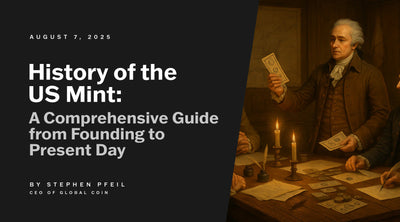
History of US Mint: A Comprehensive Guide from Founding to Present Day
The United States Mint, often simply called the U.S. Mint, stands as a cornerstone of American e...
Discover More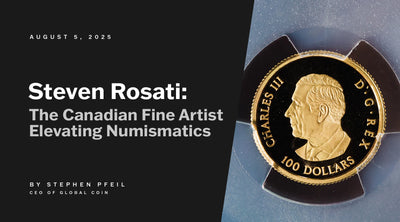
Steven Rosati: The Canadian Fine Artist Elevating Numismatics
As the founder of Global Coin and a numismatist with over 20 years of experience, I’ve handled co...
Discover More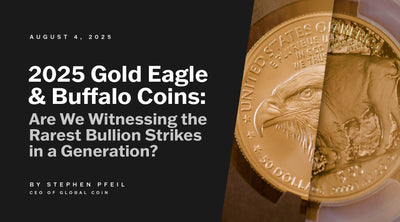
2025 Gold Eagle and Buffalo Coins: Are We Witnessing the Rarest Bullion Strikes in a Generation?
In a world where gold is more than just a commodity—where it’s a legacy asset, a hedge against ...
Discover More

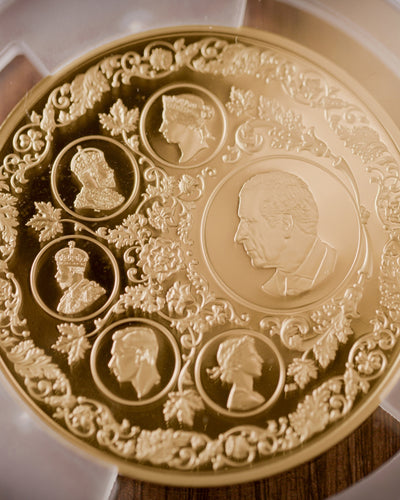
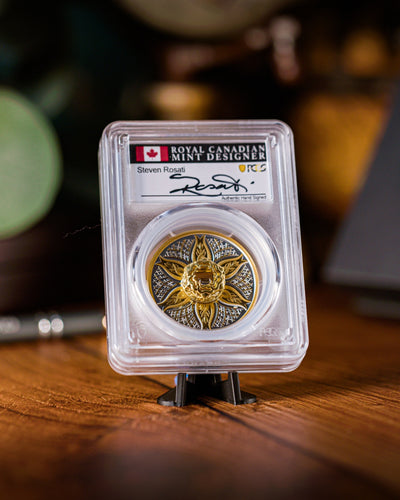
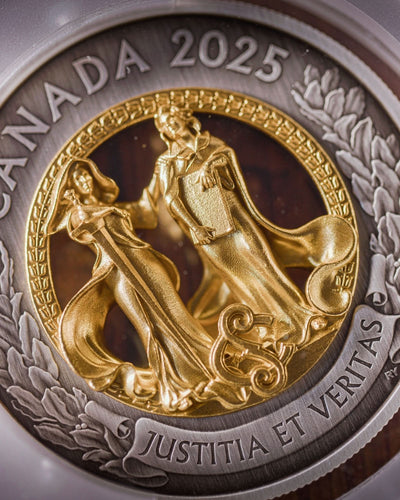
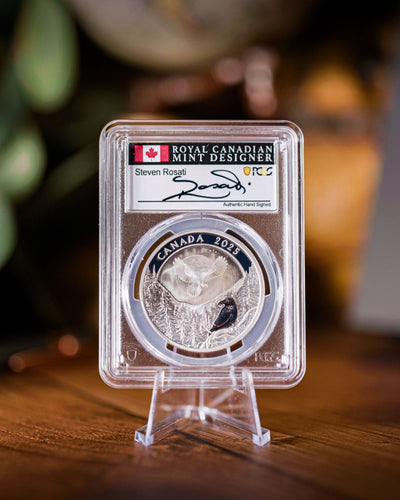
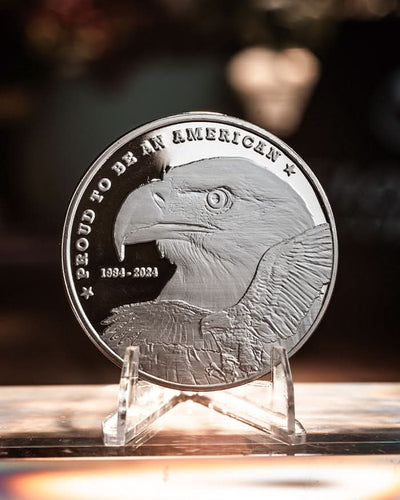
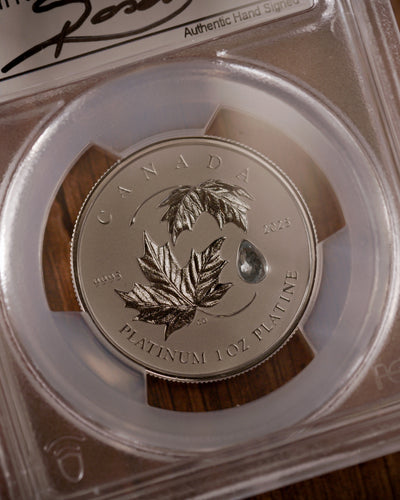
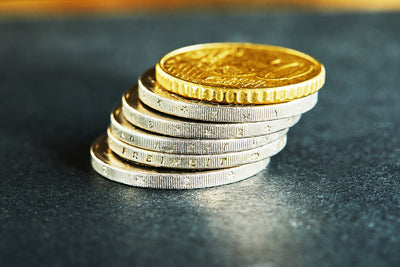
Leave a comment
This site is protected by hCaptcha and the hCaptcha Privacy Policy and Terms of Service apply.